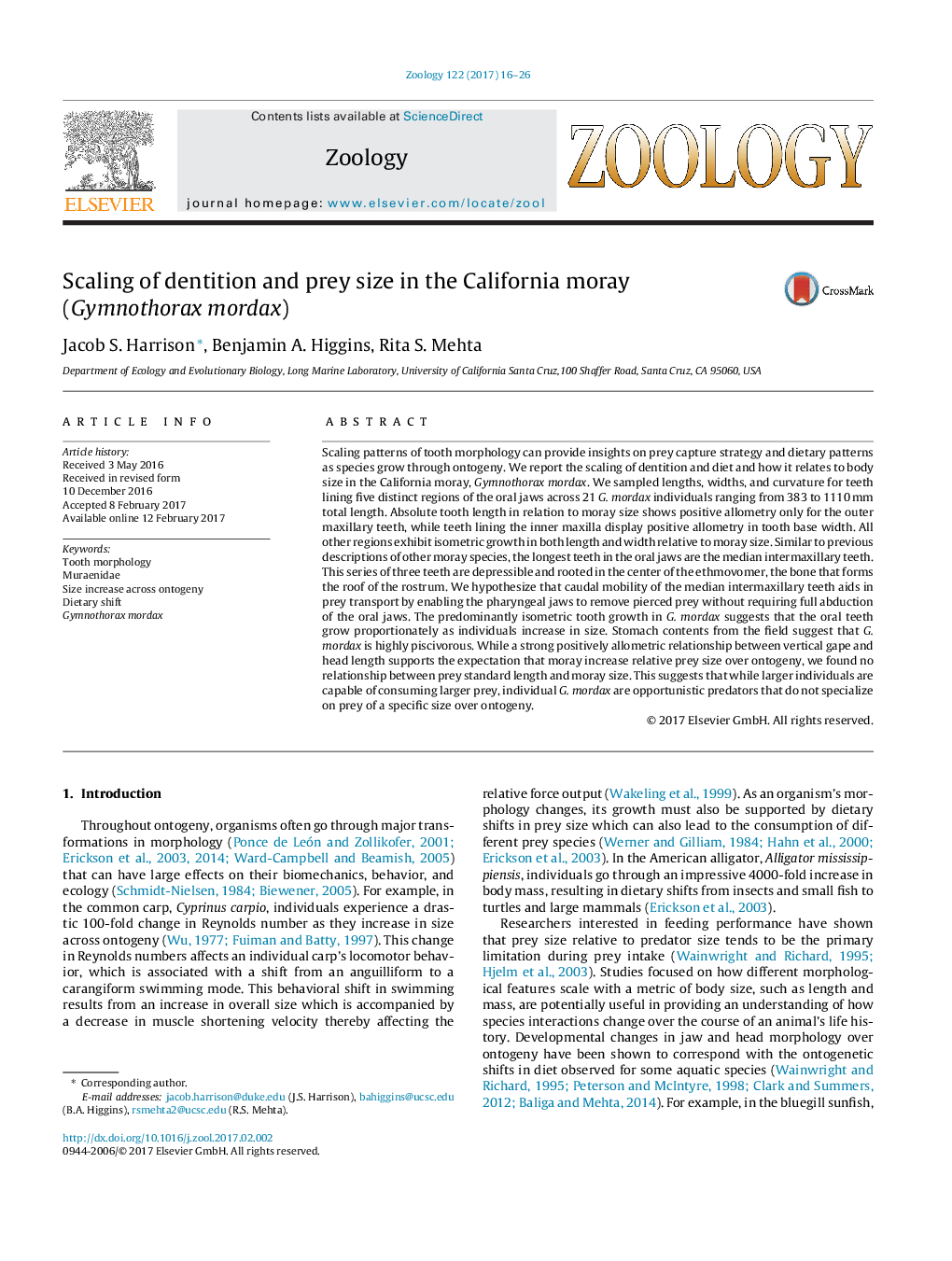| کد مقاله | کد نشریه | سال انتشار | مقاله انگلیسی | نسخه تمام متن |
|---|---|---|---|---|
| 5586540 | 1568636 | 2017 | 11 صفحه PDF | دانلود رایگان |

- California moray exhibits predominantly isometric tooth growth in both length and width within the oral jaws.
- Depressible median intermaxillary teeth facilitate prey transport by the pharyngeal jaws.
- California moray retain small prey items in their diet as they grow, despite exhibiting positive allometry in head length and vertical gape distance over ontogeny.
Scaling patterns of tooth morphology can provide insights on prey capture strategy and dietary patterns as species grow through ontogeny. We report the scaling of dentition and diet and how it relates to body size in the California moray, Gymnothorax mordax. We sampled lengths, widths, and curvature for teeth lining five distinct regions of the oral jaws across 21 G. mordax individuals ranging from 383 to 1110Â mm total length. Absolute tooth length in relation to moray size shows positive allometry only for the outer maxillary teeth, while teeth lining the inner maxilla display positive allometry in tooth base width. All other regions exhibit isometric growth in both length and width relative to moray size. Similar to previous descriptions of other moray species, the longest teeth in the oral jaws are the median intermaxillary teeth. This series of three teeth are depressible and rooted in the center of the ethmovomer, the bone that forms the roof of the rostrum. We hypothesize that caudal mobility of the median intermaxillary teeth aids in prey transport by enabling the pharyngeal jaws to remove pierced prey without requiring full abduction of the oral jaws. The predominantly isometric tooth growth in G. mordax suggests that the oral teeth grow proportionately as individuals increase in size. Stomach contents from the field suggest that G. mordax is highly piscivorous. While a strong positively allometric relationship between vertical gape and head length supports the expectation that moray increase relative prey size over ontogeny, we found no relationship between prey standard length and moray size. This suggests that while larger individuals are capable of consuming larger prey, individual G. mordax are opportunistic predators that do not specialize on prey of a specific size over ontogeny.
Journal: Zoology - Volume 122, June 2017, Pages 16-26